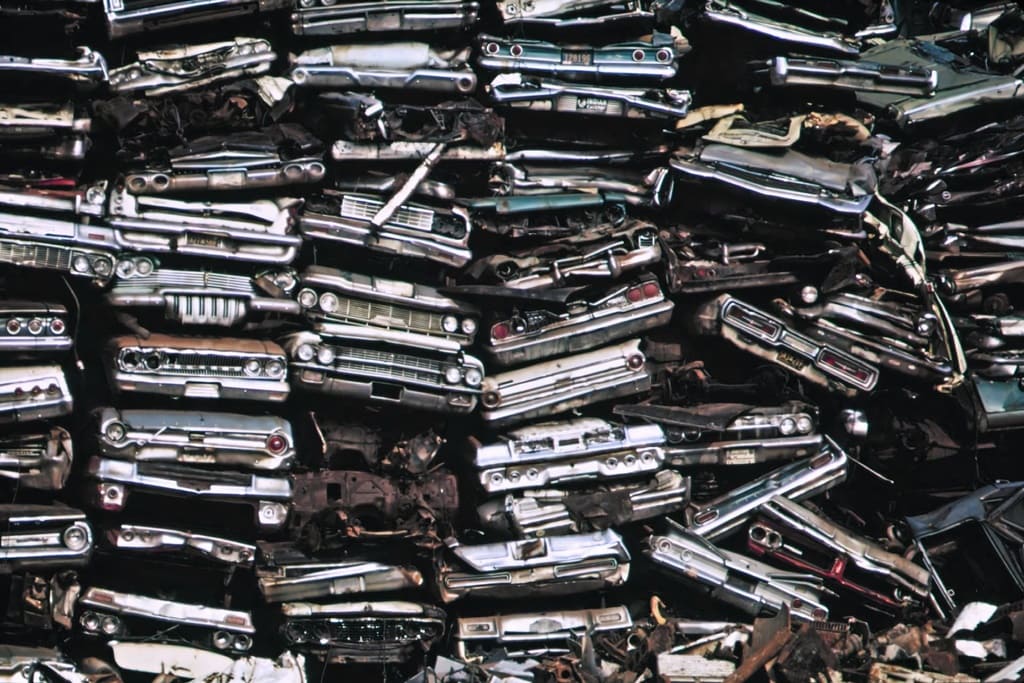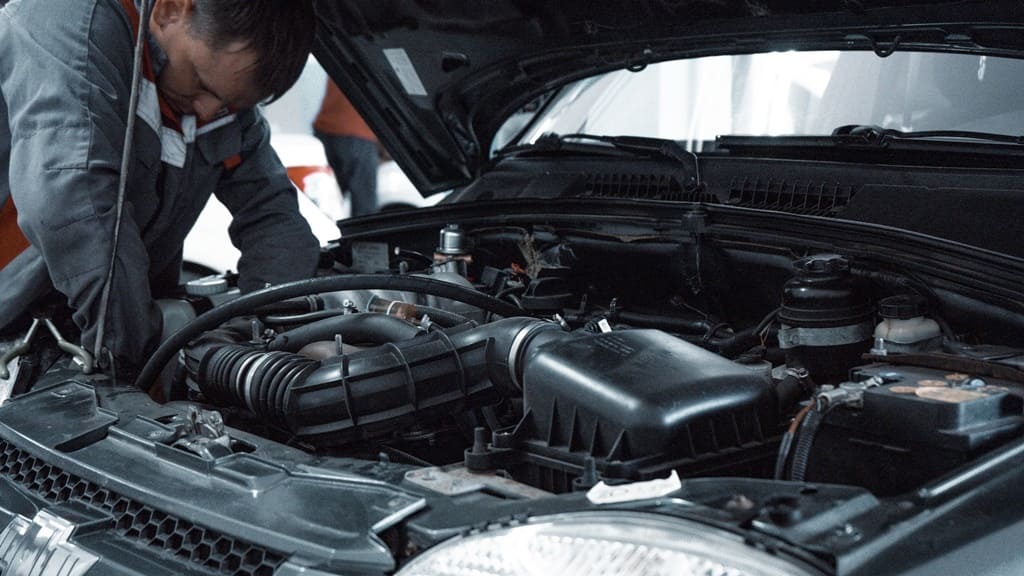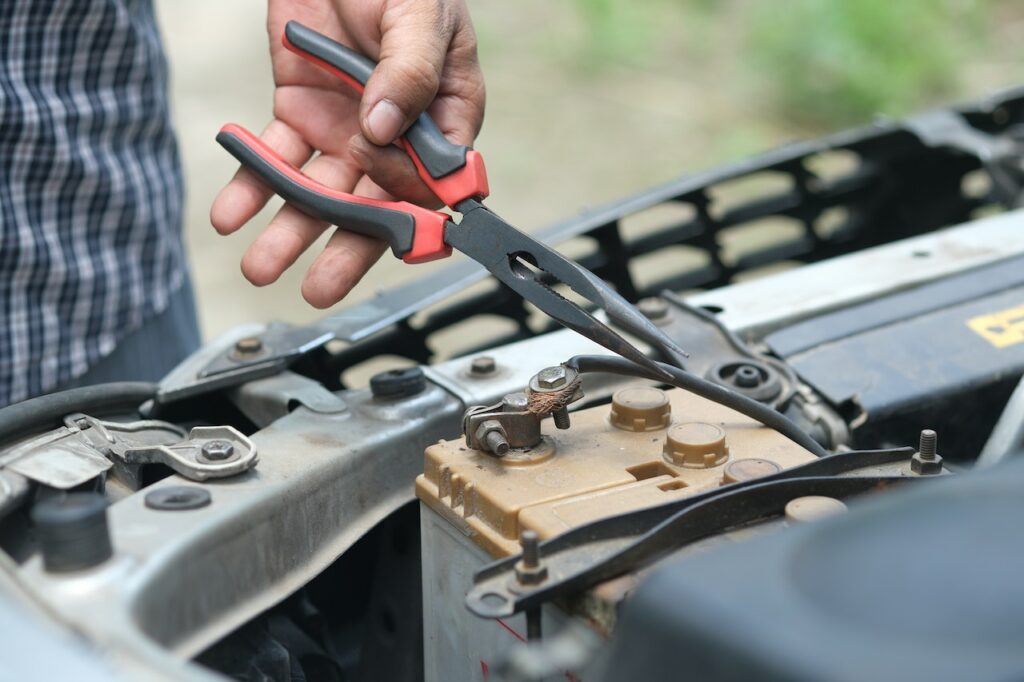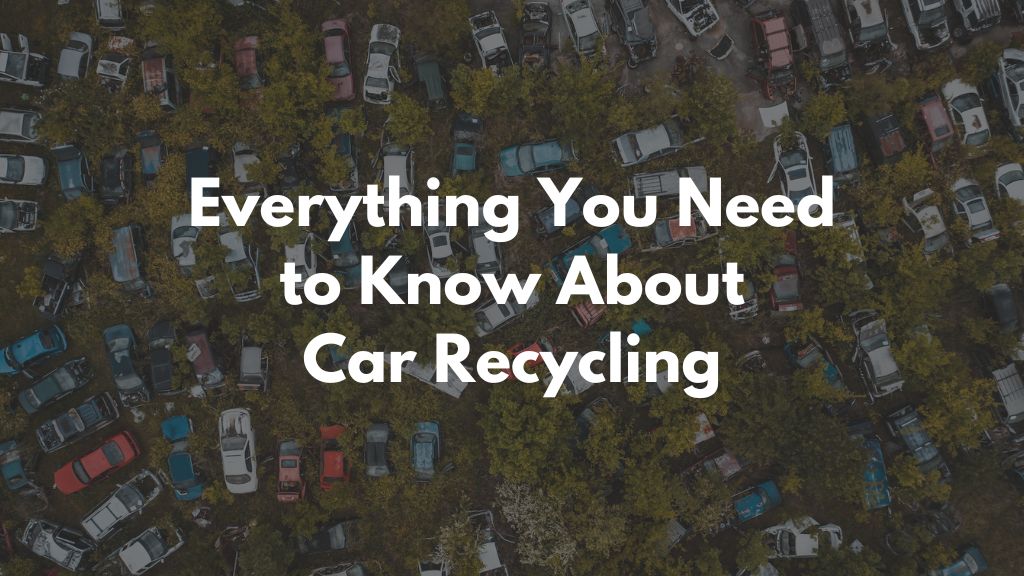Last Updated on August 17, 2023 by Calvyn Ee
When your old junker finally (and figuratively) breathes its last breath, it’s tempting to haul it off to the nearest landfill and call it a day. However, abandoned cars are still potential hazards even if they’ve reached the end of their service life. Within them contain various materials that can be reused and even hazardous waste that can cause long-term damage to the environment if not handled carefully.
Instead of dumping your car at a scrapyard, consider the more eco-friendly option: car recycling. It’s a very important avenue for the safe and responsible disposal of end-of-life vehicles (ELVs), and our article will tell you everything you need to know about it.
What is Car Recycling?

Car recycling is the process of dismantling and recycling end-of-life vehicles (ELVs) to extract valuable materials, substances, and components that can be reused. At the same time, it helps reduce overall waste and even prevents the release of dangerous substances into the environment. An ELV is a vehicle (be it a car, van, SUV, and so forth) that has reached the end of its service due to age, damage sustained, mileage, or a combination of various factors.
As of 2022, the United States has a whopping 284 million vehicles, second only to China. Approximately 12 million vehicles in the United States are processed by recyclers each year – that’s only 4 percent of the total number of cars in the country. It’s the reason why the Automotive Recyclers Association (ARA) was founded, an “international trade association that represents an industry dedicated to the efficient removal and reuse of automotive parts and the safe disposal of inoperable motor vehicles.”
Old vehicles are one of the most recycled products in the world. In fact, most non-hybrid internal combustion engine (ICE) vehicles are “85-90 percent recyclable.” Car parts in relatively good condition can be resold and reused by mechanics or the general public, all at a reasonably discounted price. Various other substances and components, such as fuel and engine coolant, can also be recovered; in cases where they can’t be recycled, they must be properly disposed of to prevent environmental damage.
Why Recycle Your Car?

Recycling an ELV like your 18-year-old car offers numerous benefits for the environment and the automotive industry, among other parties.
Environmental Benefits
Car recycling helps to reduce the environmental impact of automotive waste. Landfills already have a significant environmental impact with the waste disposed of on their grounds. With automotive waste, an unprecedented oil leak can put the nearby surroundings at risk: a single drop of oil can contaminate one million gallons of fresh water, equal to a year’s supply for 50 people.
Resource Conservation
Recycling ELVs allows for recovering and reusing valuable materials like steel, aluminum, and copper. With how abundant a car is in terms of reusable materials, recycling these goes a long way to reduce resource wastage when manufacturing new vehicles. Additionally, recycling saves energy compared to producing new components, as you’re using reusable raw materials that would otherwise go to waste.
Even glass windshields that are in good condition can be repurposed; glass takes a million years to decompose, on top of being a hazard to anyone walking around the area. As a result, it helps contribute to more sustainable and efficient uses of existing resources.
Carbon Footprint
By recycling end-of-life vehicles, you’re helping reduce your carbon footprint, as it reduces the energy costs and greenhouse gas emissions from manufacturing brand-new vehicles. In fact, as much as 18 million tons of steel can be recycled from ELVs annually, which can be reused for various purposes besides car-making. Doing so can make a difference in combating climate change and promote a more sustainable future.
Hard-to-Find Parts
As older vehicles are retired, certain components become much harder to find and replace. Car recycling addresses this by salvaging parts from ELVs, which can be used to repair older vehicles and restore them to working condition. This ensures the longevity of older vehicles and provides car enthusiasts with the necessary components to maintain their cherished vehicles.
Economic Benefits
The automotive recycling industry generates substantial revenue and job opportunities. The ARA reports that the industry generates over $25 billion annually, making it a significant economic contributor. Furthermore, selling reusable parts and extracting valuable materials provide economic incentives for both recyclers and consumers.
The Car Recycling Process
Car recycling involves several key steps to effectively dismantle, reuse, and recycle different components of an ELV.
Initial Assessment

Before a vehicle reaches car recyclers, its condition will be assessed first, mainly to determine whether it only needs repairs (like replacing a few broken components) or needs to be recycled entirely. Vehicles with salvage titles or have been declared total losses are automatically sent off to be recycled.
Recalls and safety issues can complicate the recycling process. Recyclers will generally take note of any recalls for specific vehicle models and ensure that parts they harvest from ELVs aren’t listed in these recalls. If a part seems faulty, it can’t and won’t be accepted for recycling.
Reclaiming Parts
If a vehicle is eligible for recycling, recyclers will identify and remove whatever parts in the car can be recovered and reused. These components are cataloged and sold individually to mechanics or individuals, while some recyclers sell them to those who remanufacture components. Reused parts include tires, batteries, body panels, and more.
Items that aren’t biodegradable can still have their uses, so when they’re recycled, new products can be made simply by reusing these items, from roofing materials to new components and more.
Draining the ELV
Before dismantling can start, the recyclers must drain any fluids remaining in the ELV: oil, coolant, and various hazardous substances. This process needs to be done carefully to prevent contamination. The fluids will either be reused by the recycling facility or sent for proper recycling and disposal. De-pollution efforts will ensure all harmful chemicals are safely removed from the surrounding environment.
Removing hazardous materials from the ELV usually requires special methods to prevent environmental contamination. These materials may include air conditioning refrigerants, lead wheel weights, and mercury-containing switches in much older vehicles. Proper management and disposal of these hazardous materials are essential to protect the environment and human health.
Battery Recycling

Conventional lead-acid batteries found in internal combustion engine (ICE) cars can be sold as cores for refurbishment once all their insides have been emptied. In fact, 99 percent of batteries are recycled and made into brand-new batteries. Unfortunately, recycling hybrid and electric vehicle batteries present various challenges of their own.
For one, EV and hybrid batteries are newer techs with more complex materials and construction techniques required. Approximately 30 percent of EV or hybrid battery components will be recycled but not reused in making new batteries. Additionally, the lack of established recycling paths makes recycling difficult. There are avenues to do so, but they’re very expensive, and the market for these recycled parts is limited. Collaboration between recyclers and manufacturers may be beneficial in developing effective solutions for efficient and eco-friendly battery recycling measures.
Separating the Metals
After removing all reusable components and unwanted hazardous materials, the ELV’s shell is flattened using a giant press. Once compressed, it goes through a shredding process to separate metals; this is done using magnets or compressed air. The remaining materials, mostly plastics, carpet, glass, and seat fabric, are often used as landfill cover to reduce odors and pests.
Where to Recycle Your Car

Before your car is towed away for recycling, though, be sure you’ve cleaned it thoroughly of any personal belongings you might have left inside. This may include custom electronics such as GPS systems, identification papers, important documents, or even valuable belongings.
Make sure you remove the license plates, too, considering some states require that plates be returned to them or that the relevant authorities are informed that you’re removing these plates for the purpose of recycling. Gather all the necessary paperwork, such as the vehicle title, to facilitate the transfer of ownership. This is also important as an audit trail if something happens later.
Once that’s done, you can decide on the best option to recycle your car:
Authorized Treatment Facilities
An authorized treatment facility (ATF) specializes in car recycling and has the expertise and equipment to safely and efficiently dismantle and recycle ELVs sent to them. They will ensure that all hazardous materials are properly managed and that valuable components are reclaimed and reused where needed.
Sell to Clunker-Acquiring Businesses
Consider selling your car to companies that buy ELVs and other kinds of non-drivable vehicles. These companies will buy them from you and facilitate their recycling or refurbishment. You’ll be able to play your part in recycling while also receiving some compensation for your old vehicle.
Donating to Non-Profit Organizations
Another option is to donate your ELV to non-profit organizations. Many non-profit organizations accept vehicle donations, which they then sell for recycling or refurbishment. By donating your car, you contribute to charitable causes while ensuring the proper disposal of your vehicle.
Conclusion
If you thought a landfill was the last place a car goes to, you’d now know that’s far from the case. Car recycling turns your old clunker into a metaphorical organ donor and has great long-term environmental benefits. As the automotive recycling industry continues to evolve, technological innovations in automotive recycling and further government incentives can help improve the efficiency and effectiveness of car recycling by leaps and bounds. By embracing responsible disposal practices and supporting the recycling industry, we can contribute to a cleaner, greener, and more sustainable future for future generations.




